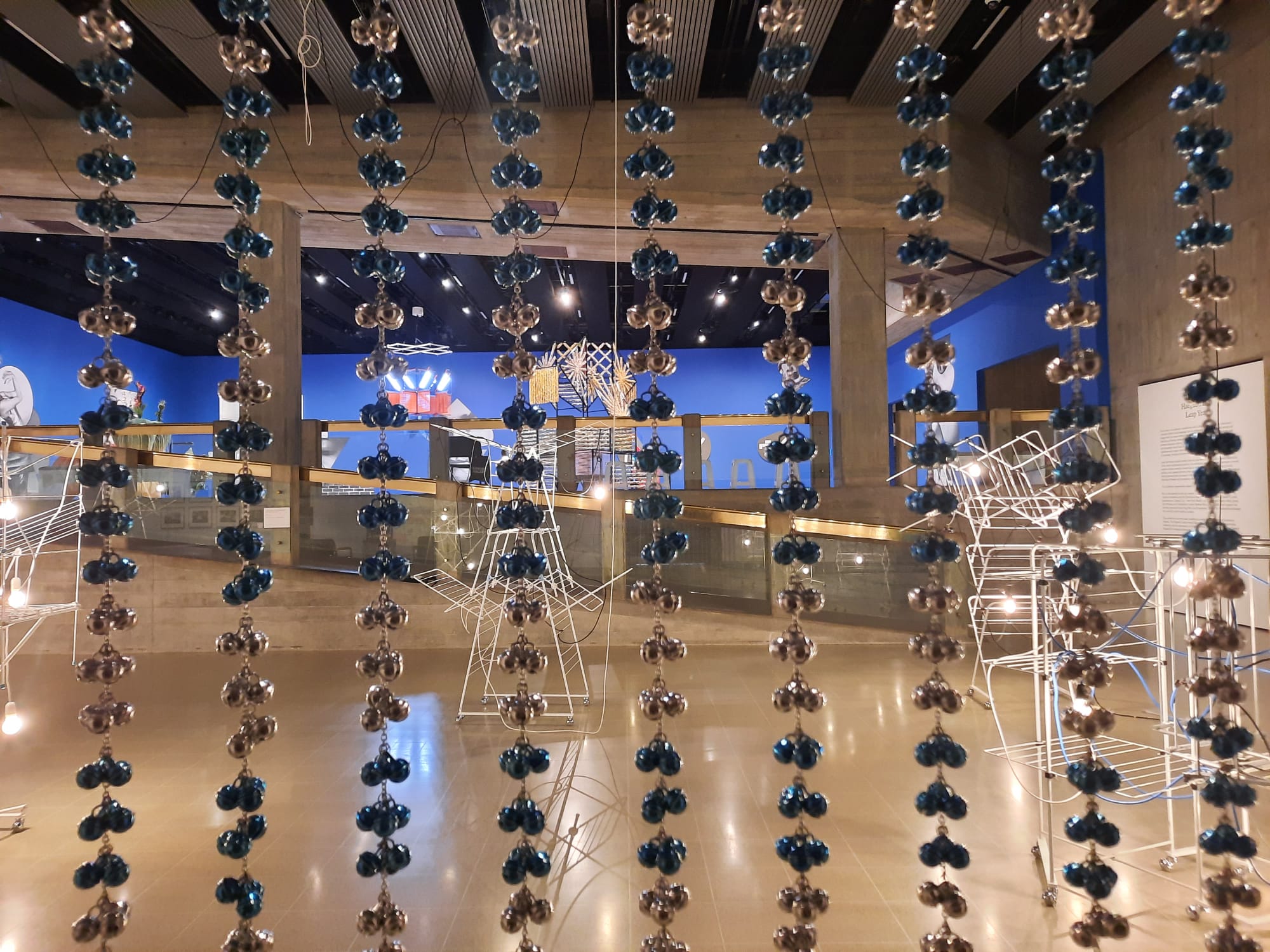Haegue Yang: Leap Year – Hayward Gallery, London
The artist’s first major survey in the UK, Haegue Yang: Leap Year fills the Hayward Gallery with ordinary objects transformed through the artist’s multidisciplinary practice.
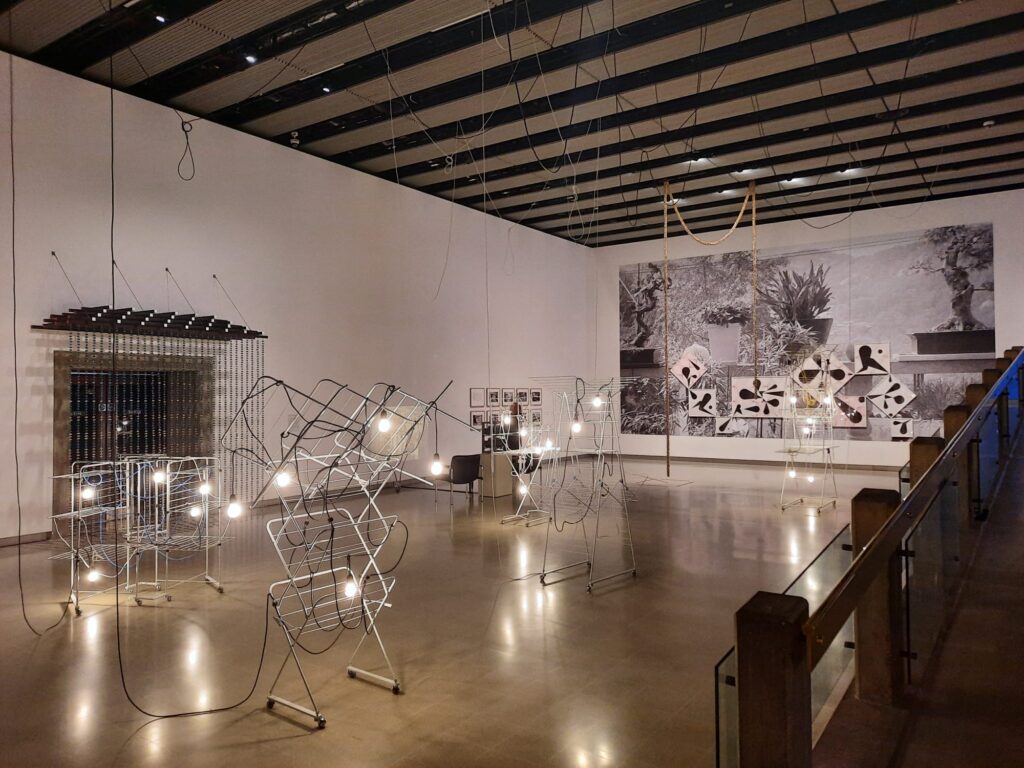
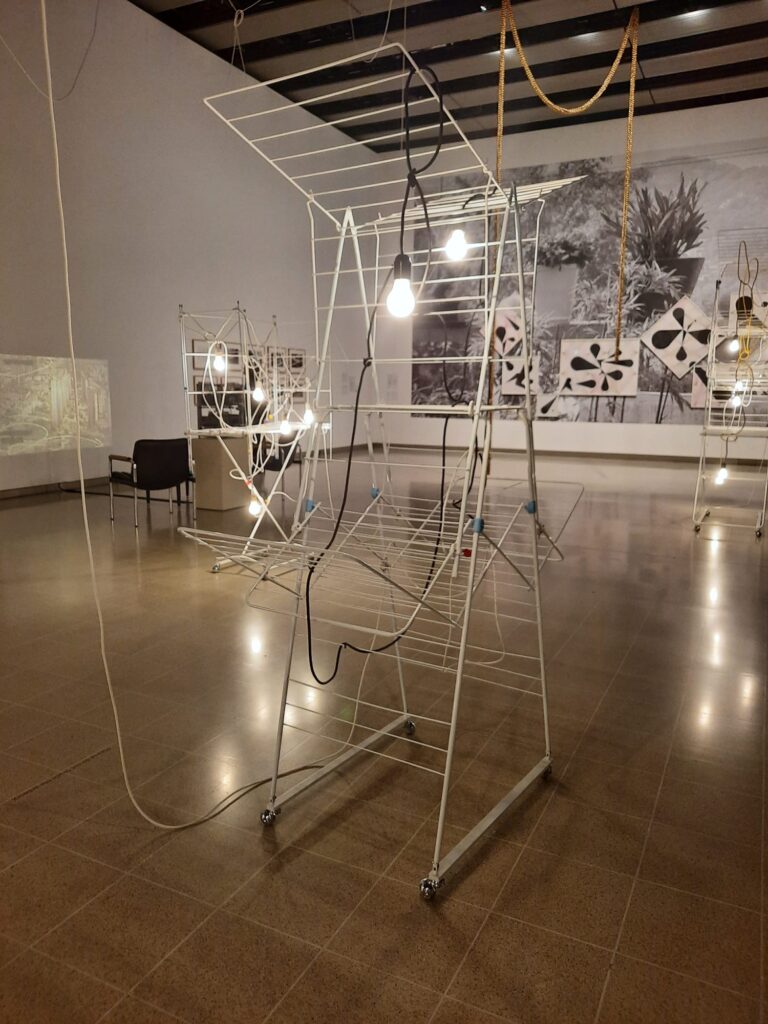
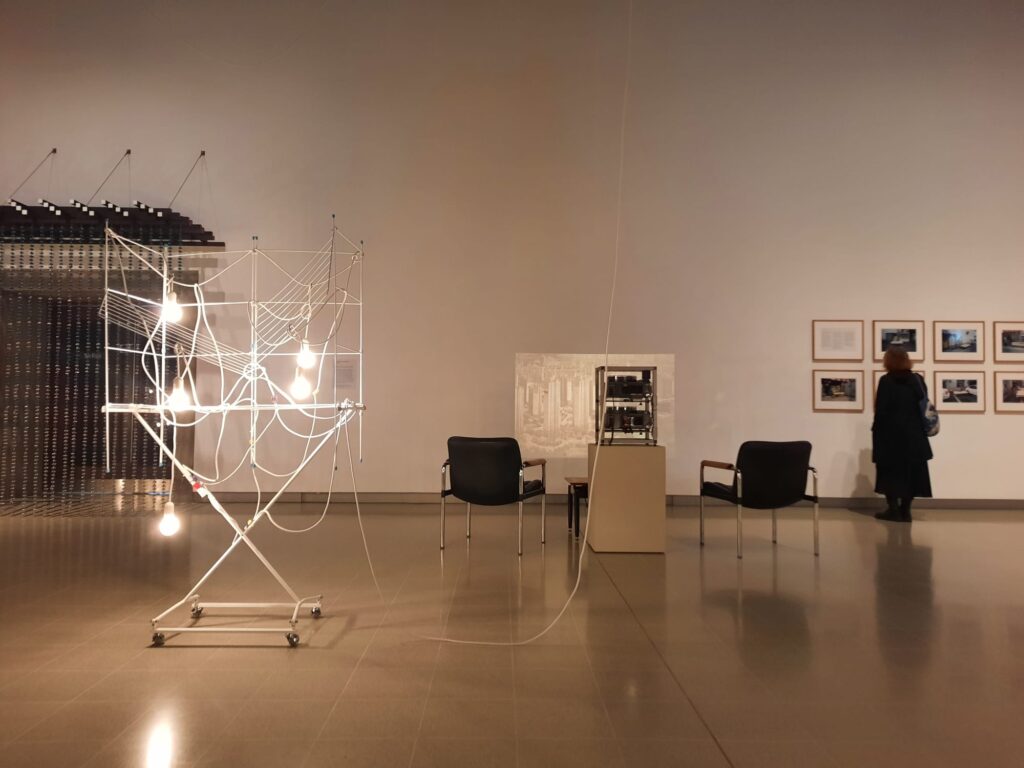
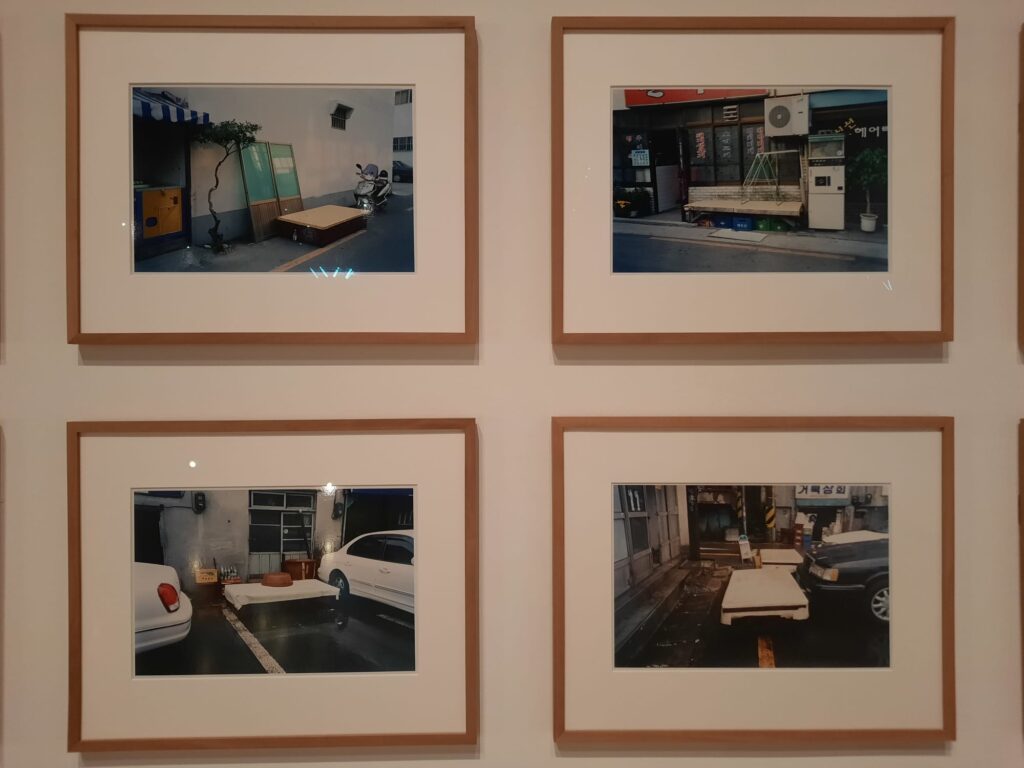
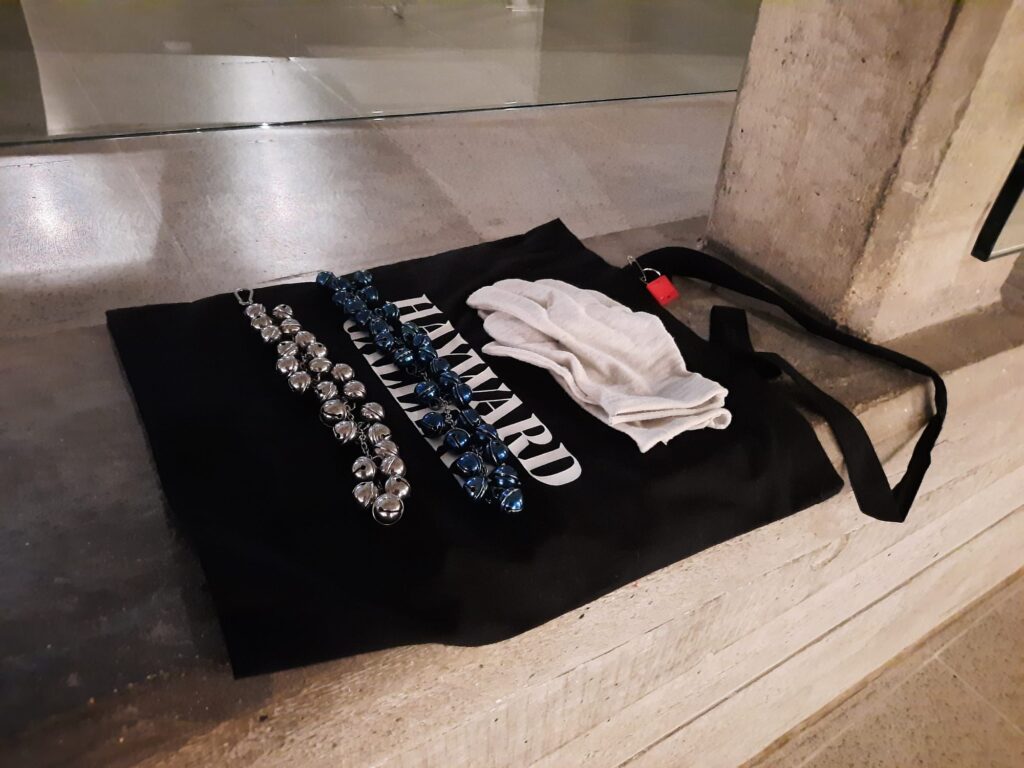
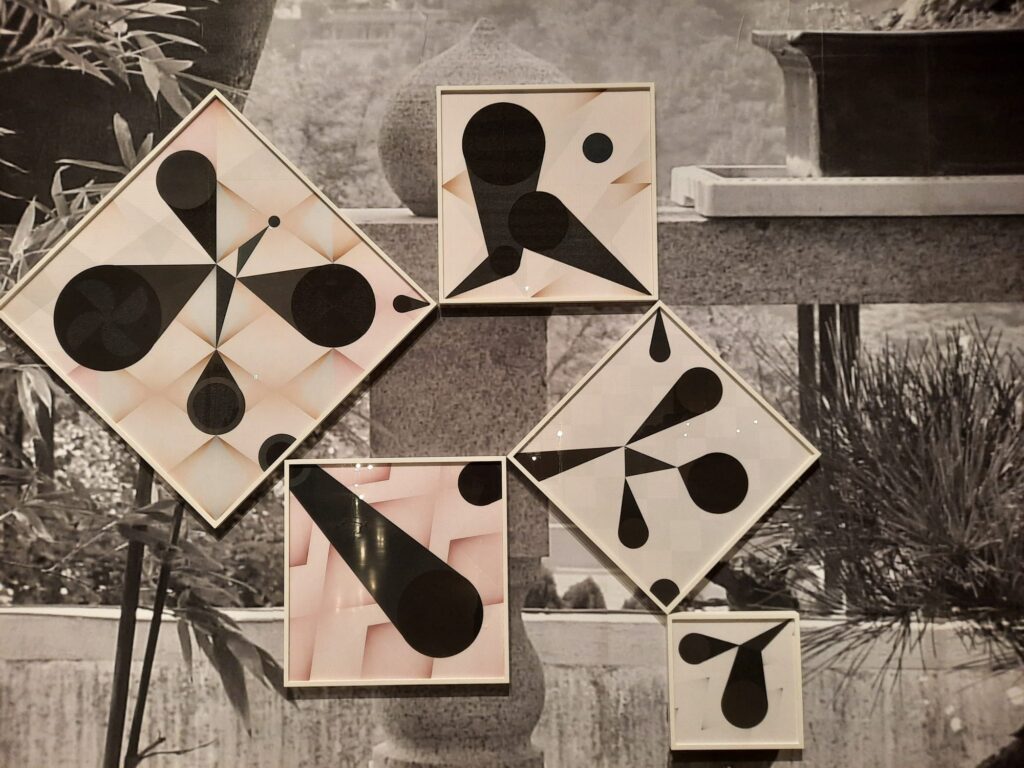
Introducing Haegue Yang
Given that Haegue Yang: Leap Year is the artist’s first major survey in the UK, I’m going to take a punt and guess that you are maybe not too familiar with her work. So let’s start today’s post with getting to know the artist. Haegue Yang (양혜규 in Korean) was born in Seoul in 1971 to politically-engaged parents who worked as a journalist and a writer respectively. She began studying art at Seoul National University, graduating with a Bachelor of Fine Art degree in 1994. The following year she moved to Germany to study with artist Georg Herold at the highly competitive Städelschule in Frankfurt. She graduated with a Master of Fine Art in 1999, and spent time as an exchange student at Cooper Union in New York City as part of her degree.
As an artist, Yang’s practice is varied. She works primarily in sculpture and installation. Visitors to Leap Year will also see collage, photography, video art and more. There is a strong autobiographical element to her work. Storage Piece (2004), for instance, is a stack of the artist’s works. It’s a response to a time in her life when she was unable to hire storage space, and turned her scattered artworks into an installation instead. As well as being rather practical, it speaks to her experience as a migrant and artist. Or there is Recollection of Sadong 30 (2006), which took place in an abandoned home formerly inhabited by Yang’s grandparents. This search for the meaning of home sparked many later tangent’s in the artist’s work.
Yang continues to live in Germany, spending time between Berlin and Seoul. She also teaches at the Städelschule. She is a fairly prolific artist, with a 2018 catalogue raisonné already containing over 1,400 works. Yang has won a number of awards including the Republic of Korea Cultural and Art Award (Presidential Citation), and her art is in museum collections in Korea, Germany, and many other countries. She represented South Korea at the Venice Biennale in 2009.

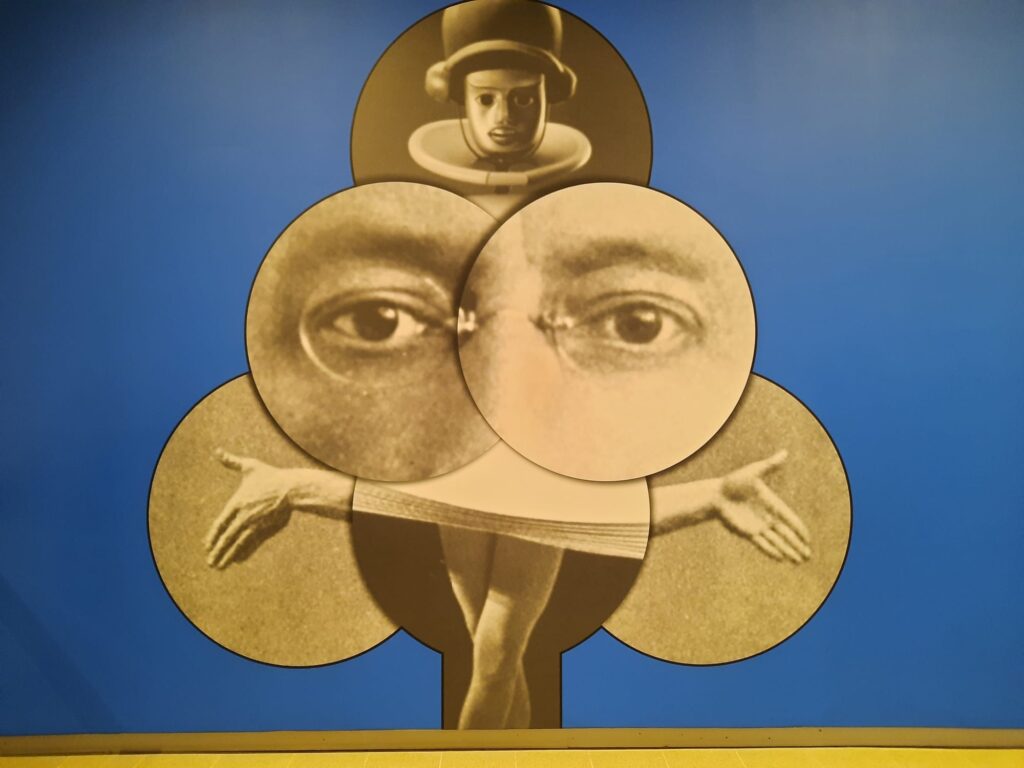
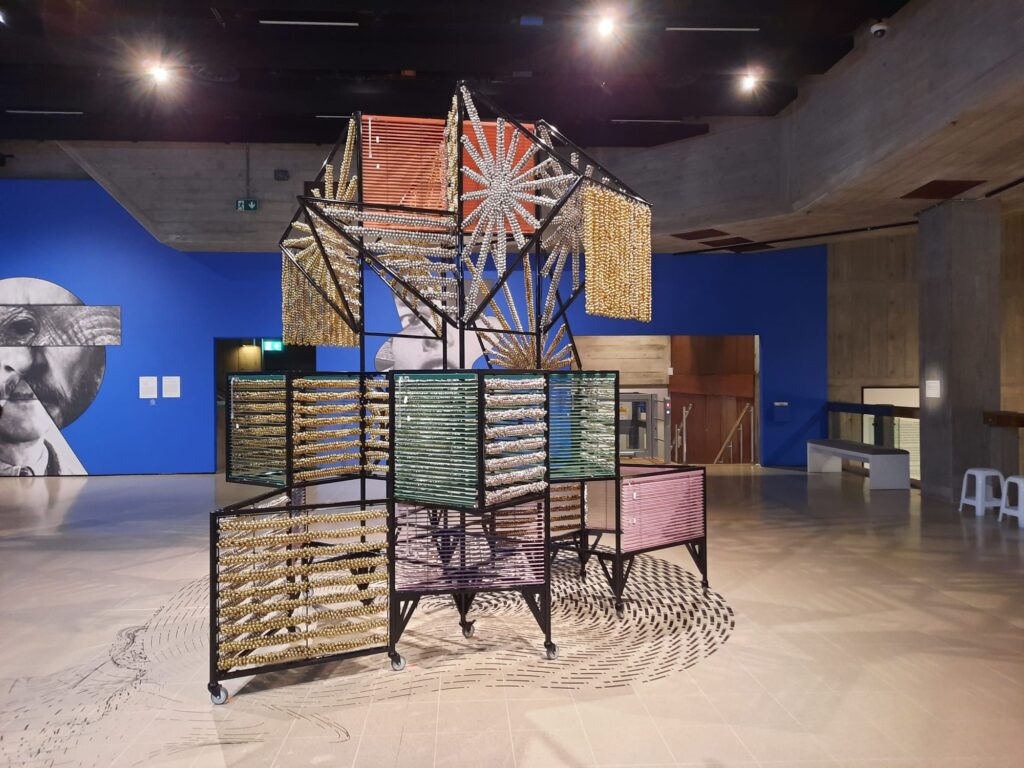
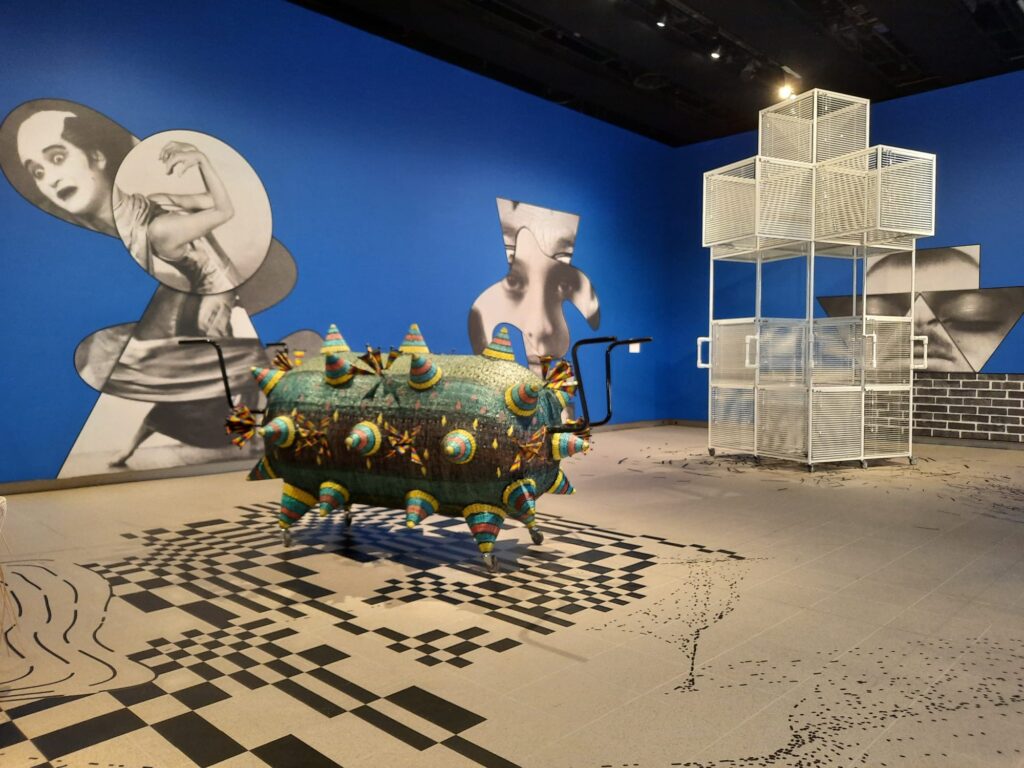
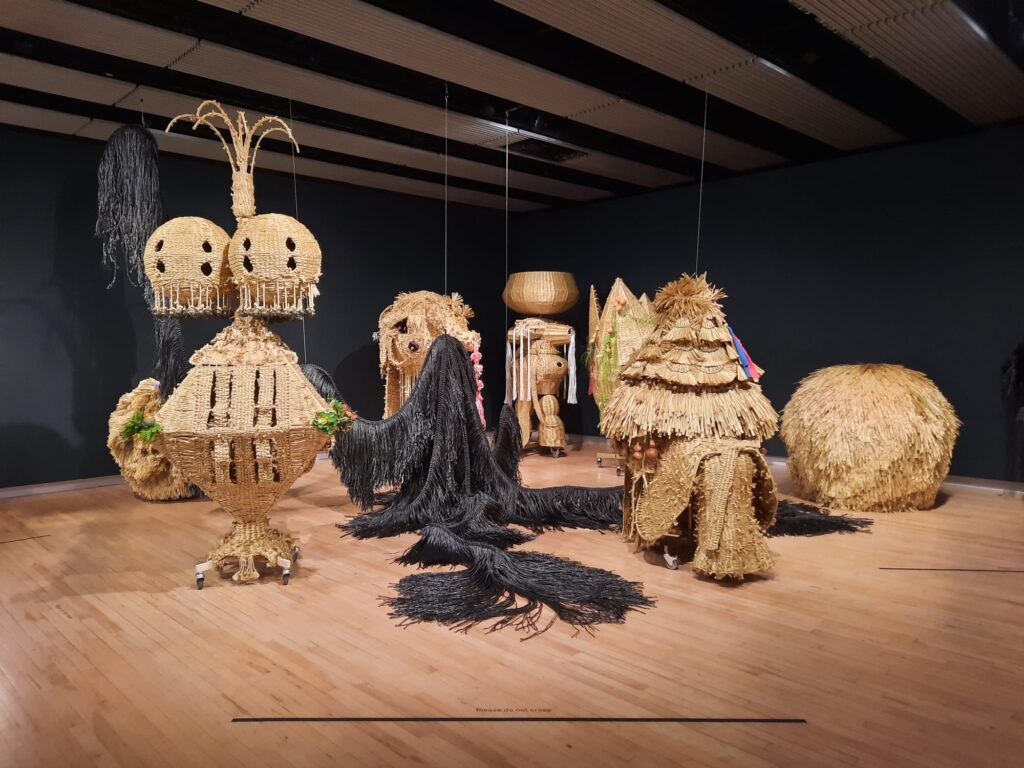
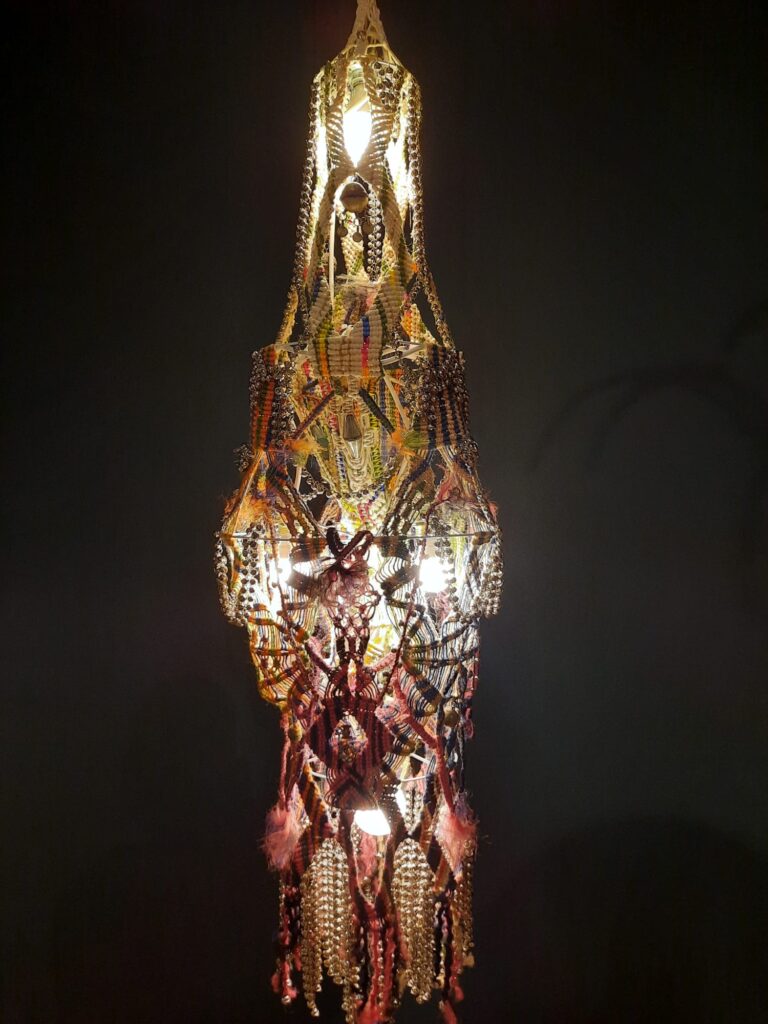
Haegue Yang: Leap Year
Although Yang’s work is multidisciplinary, it mostly touches on the sculptural. This makes it a great candidate to fill the large spaces of the Hayward Gallery. And from the first room we encounter some frequently seen features of the artist’s work. For one, entry is through a curtain of bells, Sonic Droplets in Gradation – Water Veil (2024), a commission for this exhibition. The sound brings to mind folk customs from East and West, as well as involving the visitor as part of the exhibition from the outset. Other Sonic Sculptures are not for the general public to touch, though, and are instead ‘activated’ regularly by staff.
Once safely through the Water Veil and into the exhibition space, we are surrounded by curious sculptures fashioned from household objects. These Non-Indépliables (Non-Unfoldables, 2010/2020) take drying racks as their skeletons, with lights, cable ties and other objects to bring them into strange life. This sense of familiarity and strangeness continues as we move through the rooms. I recognised the Korean tradition of wrapping trees in straw for the winter, for example, in the series The Intermediate (2015). Other folk traditions made anew include paper cutting.
By the time we have finished on the ground floor, we have a good sense of Yang’s work. Observation is key to her work. Noticing the everyday objects around us. Documenting change, for instance the use of public space in her native Korea. She is also very self-reflective. Many works have a sense of rootlessness and the search for home, stemming from her own migrations. Elements of her life appear in her work in unexpected ways. The artists and historic figures who have inspired her creep in as well: Sol le Witt and Primo Levi to name just two.
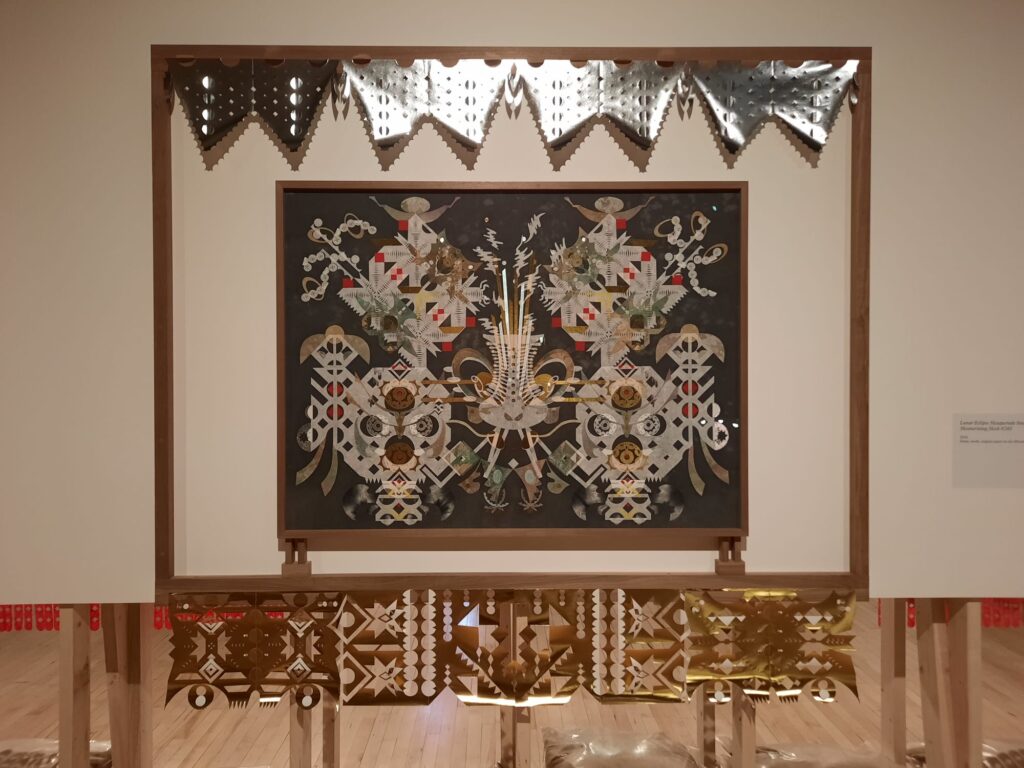
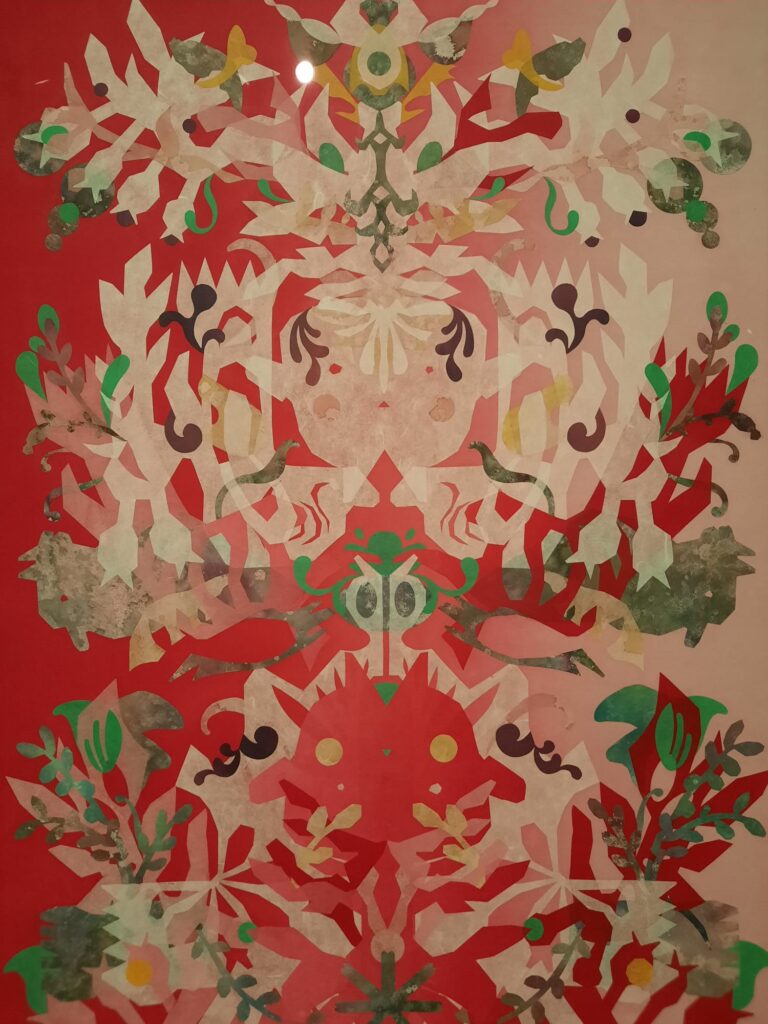
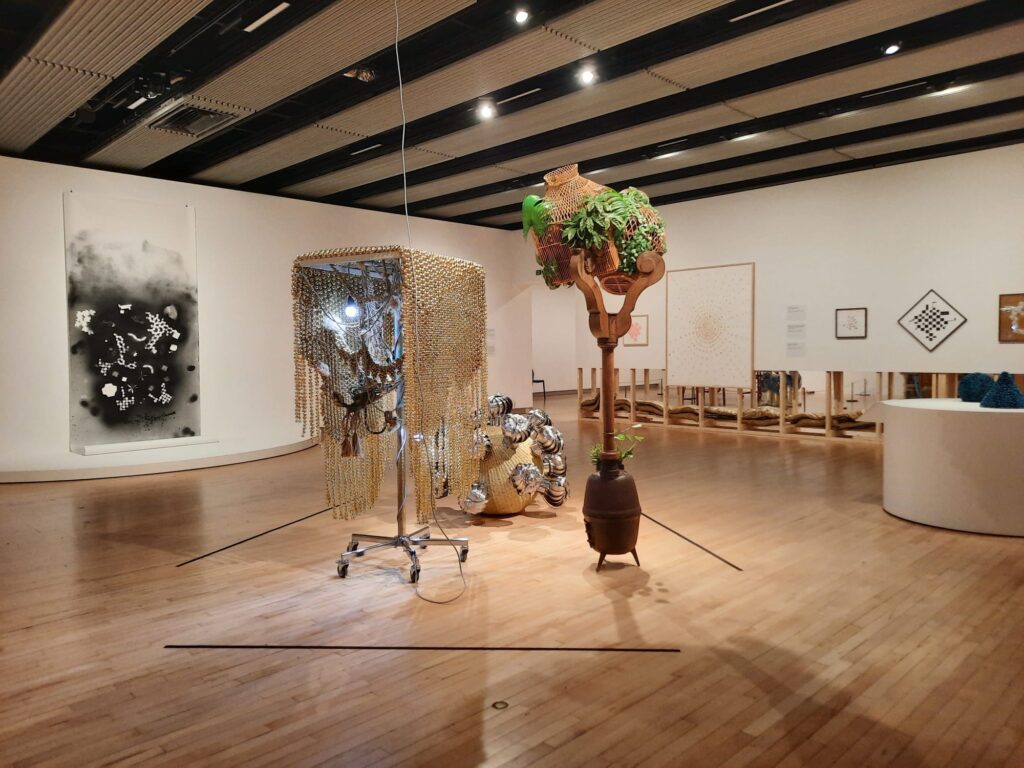
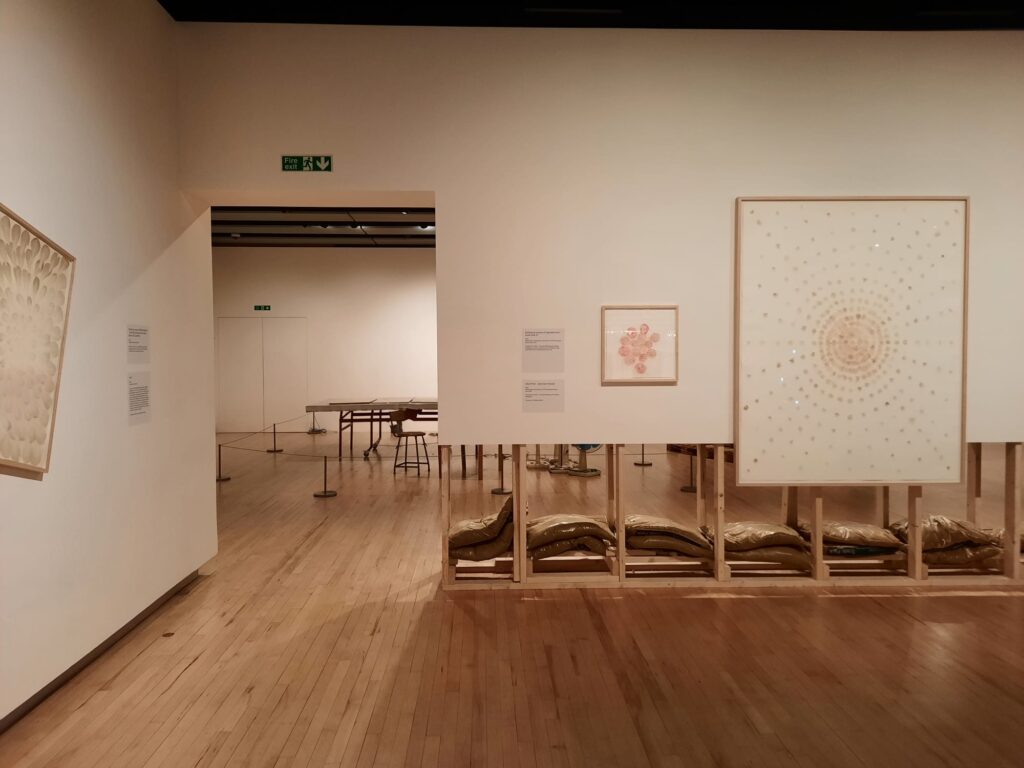
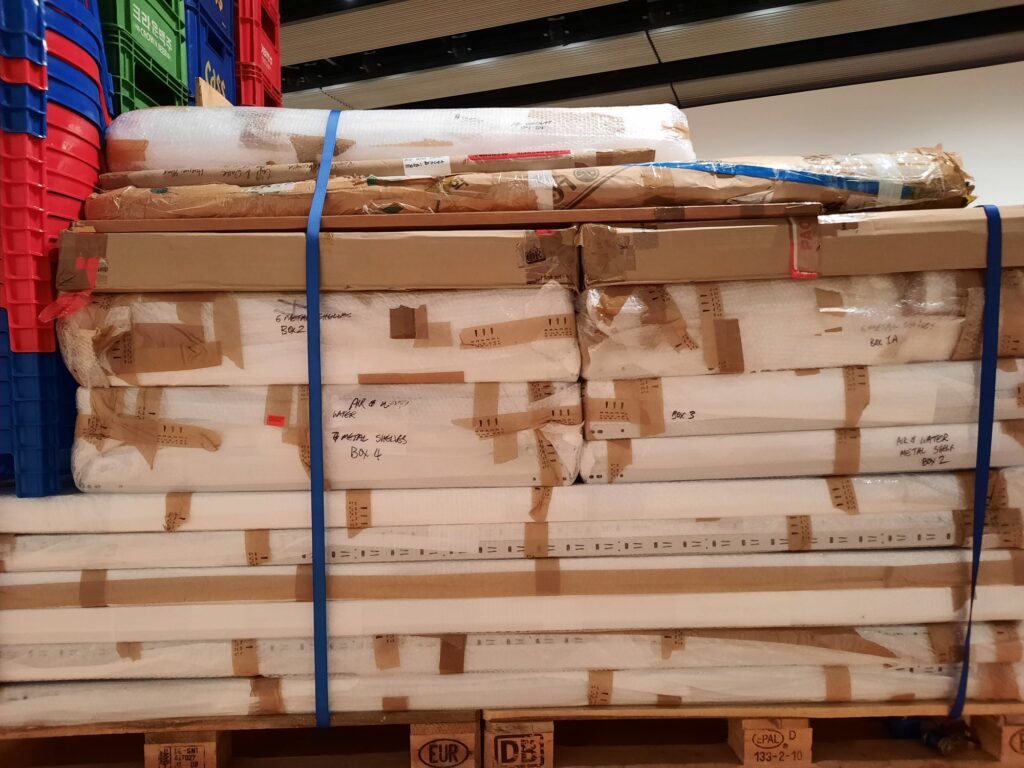
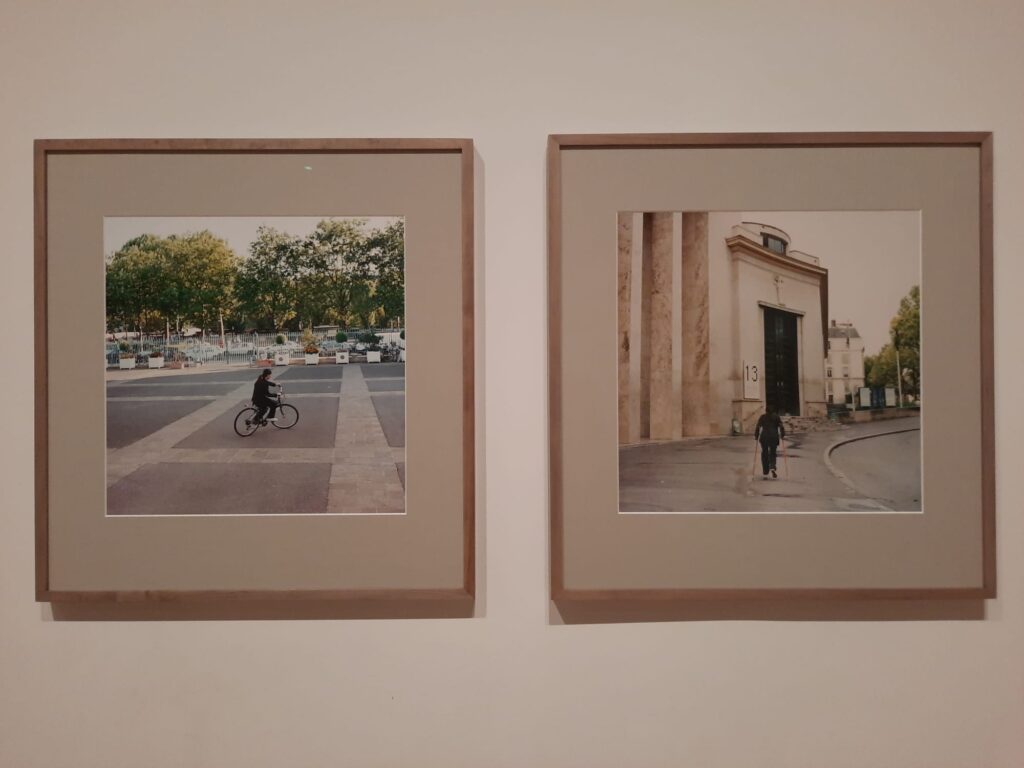
A Multi-Sensory Experience Upstairs, If You’re Patient
Upstairs the installations move outside the gallery, with Windy Terrace Beyond Reach (2024), a view of wind and water from the confines of the Hayward. Behind it is a large installation, Star-Crossed Rendezvous After Yun (2024), a combination of sculptures made from Venetian blinds, lighting, and Isang Yun‘s 1977 Double Concerto. Or, at least, I waited to hear the concerto. Then I went and asked a gallery host, who told me it would be well over half an hour until the next time I could hear it. Rather strange to leave such gaps where visitors can’t fully appreciate the work, I thought.
Another part of the multi-sensory experience upstairs I missed through my own fault. There was apparently a smell of freshly laundered clothes in the final space which included more drying rack-based works. That passed me by entirely. This space also contained images from Recollection of Sadong 30 as well as a later work recreating the journey to this home in Incheon, and not finding the building any more. Even Yang’s video works have this sense of place and home and movement.
One thing I found slightly tricky in this exhibition was the touch/don’t touch conundrum. I like following museum rules. I also like sitting. In a space where half the sculptures are made of household objects, I was never sure what I could touch. Touch the first set of bells but not the others: I got the hang of that. But were the little stools for sitting? Could I sit on those chairs to watch the videos? I decided in the end that the chairs were OK and the stools might be art: it reminded me a bit of this sort of thing. Have a look at the final image below and see if you can work out what’s art and what’s furniture.
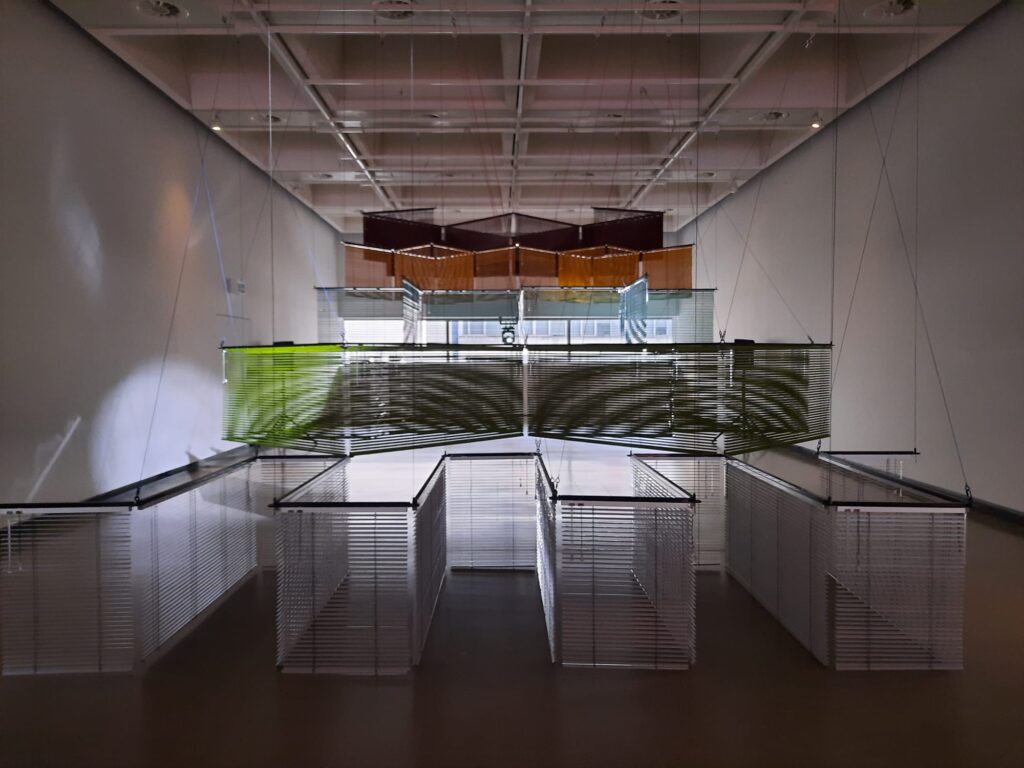
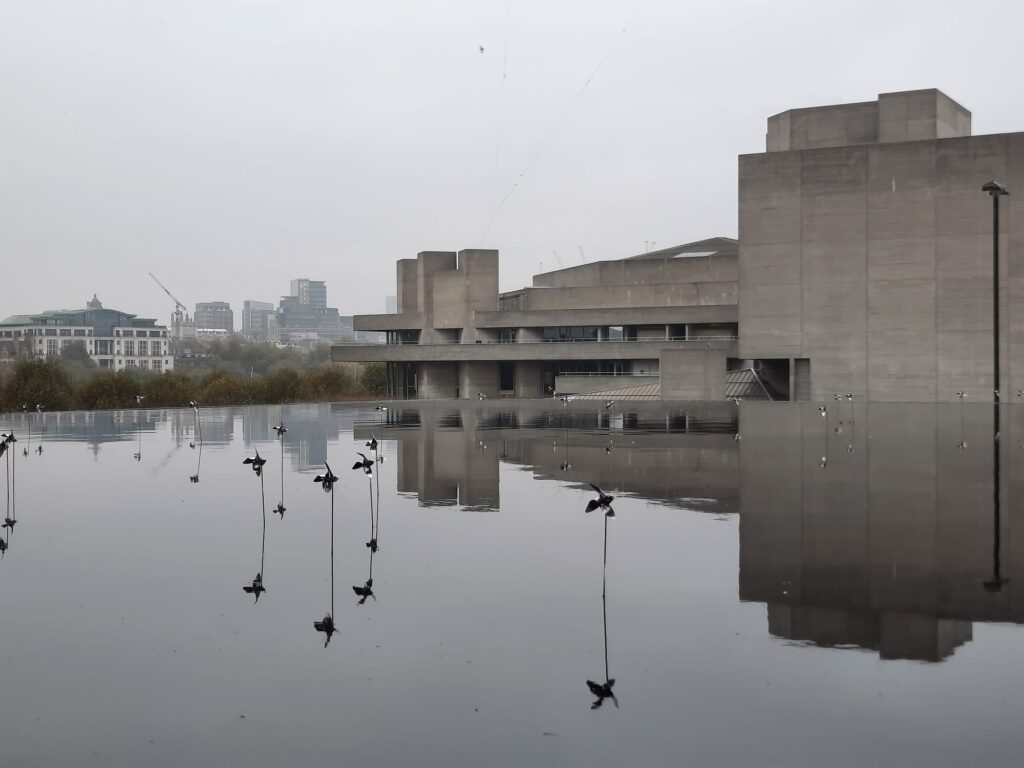
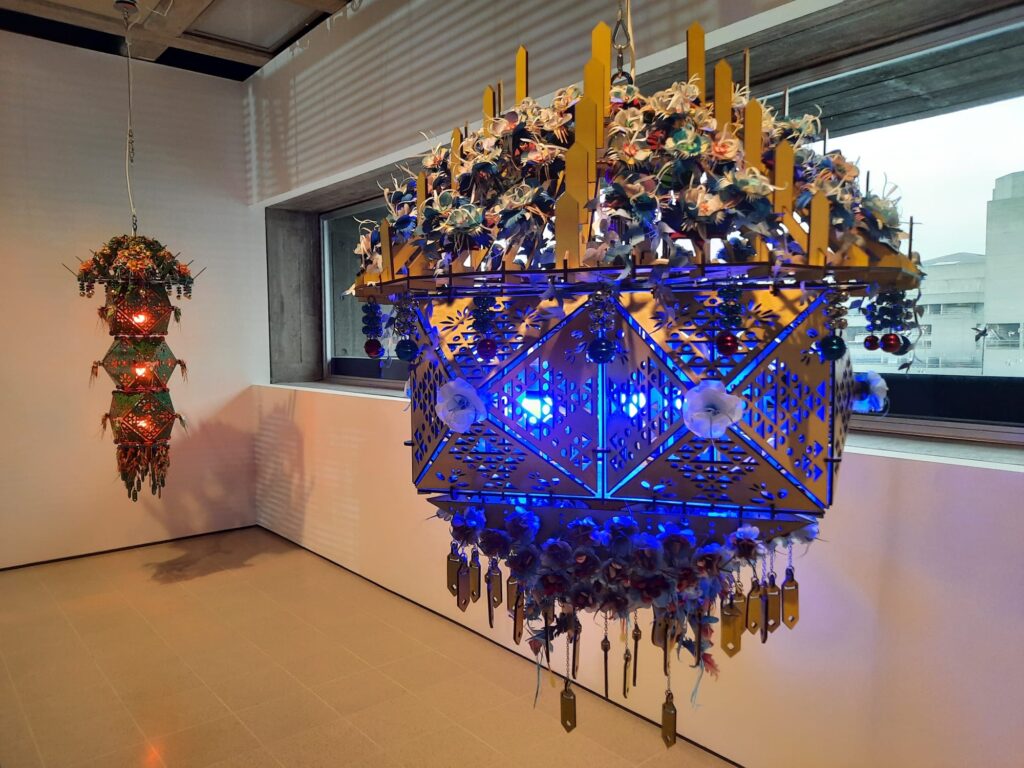
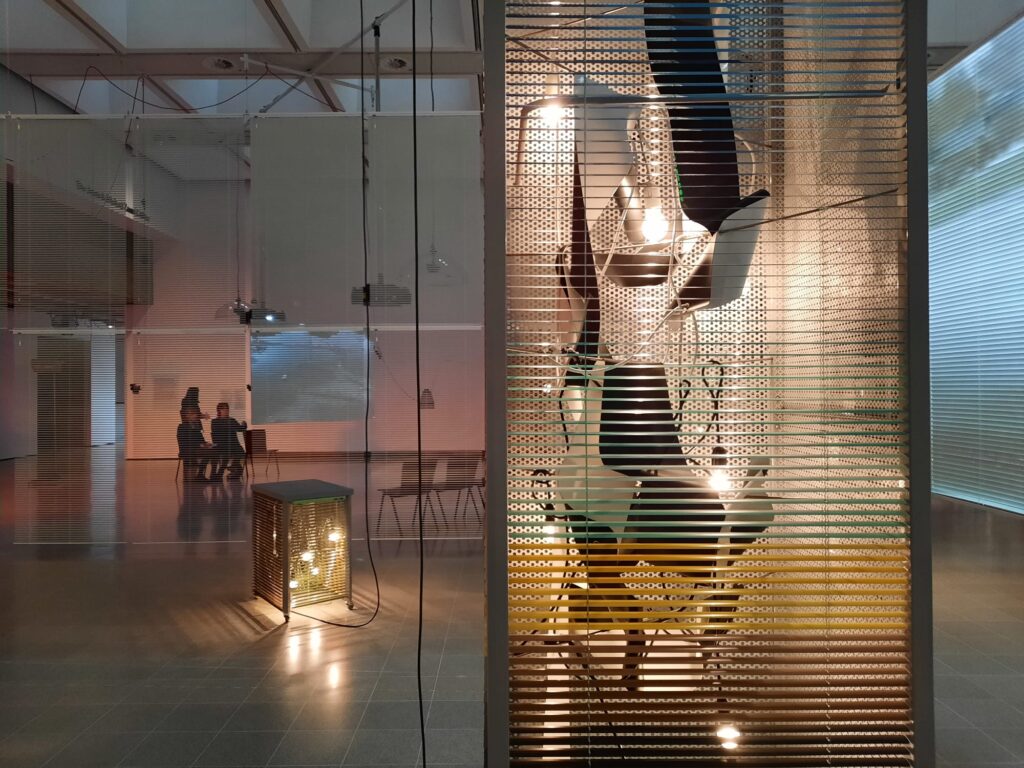
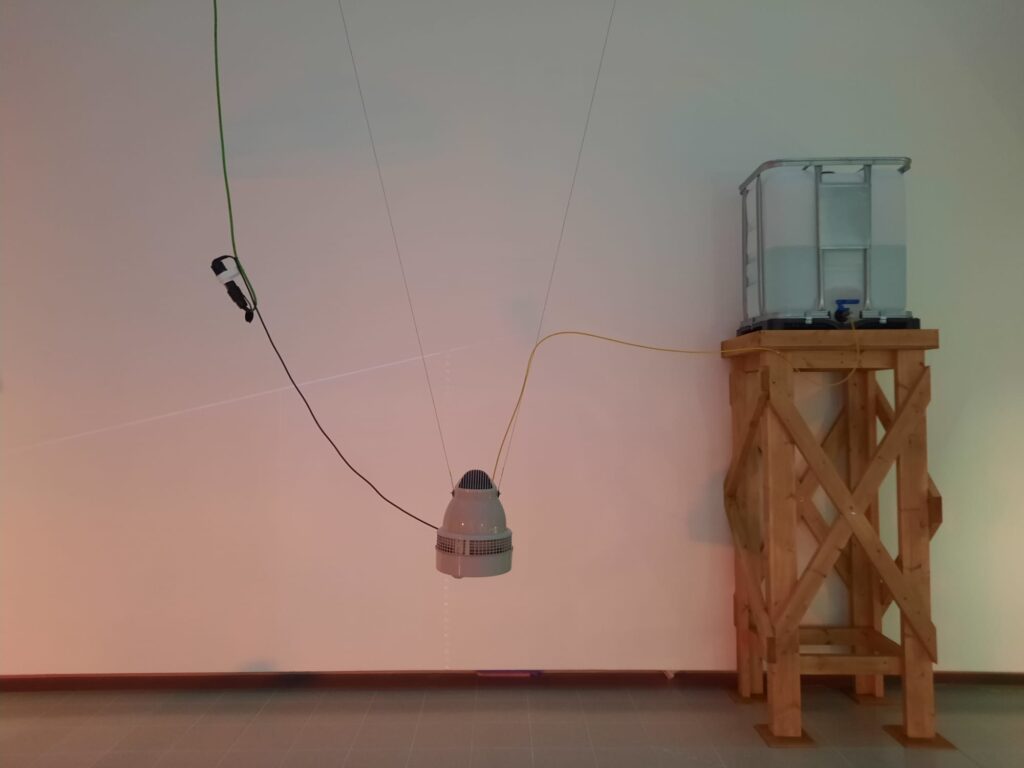
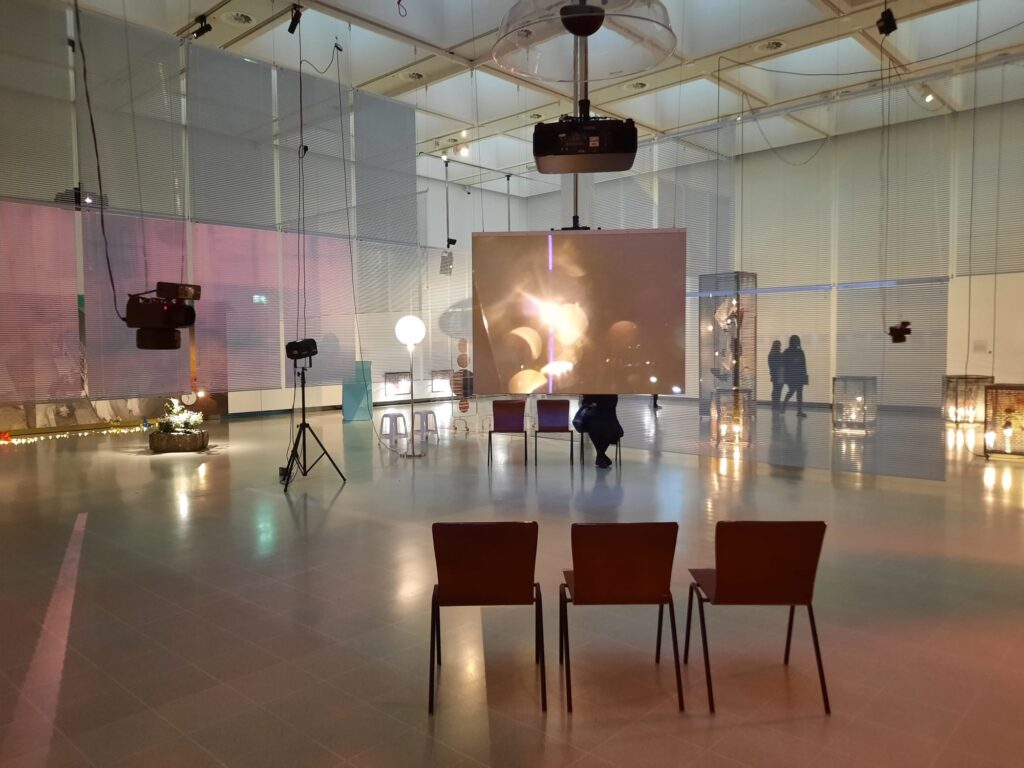
What To Make Of It All
So, then. We know a bit about Haegue Yang, have seen some art. What’s it all about? What’s the verdict? Well, I think there are a couple of things to say here. Firstly, as I mentioned before, Yang’s sculptures and installations work well in the Hayward Gallery space. It’s a visually appealing exhibition. There are interesting colours and textures, lots of different series from the last 30 years, and a lot of variety. If I compare it to the Michael Craig-Martin survey at the RA (which comes to mind because both artists have played with the potentials of Venetian blinds as material for artworks), there’s far more variety.
But what does it say? Here is where I’m a bit more on the fence. Does Haegue Yang: Leap Year fall into the category beloved of the Hayward Gallery (see this for instance) where the exhibition looks great but could be more challenging? Perhaps. Maybe a slightly narrower focus on a particular theme might have brought a bit more depth to proceedings. All I can say for now is it feels like a broad survey, but a survey which is interesting as the first time UK audiences have been treated to an overview of this particular perspective of a non-Western, female artist working in and responding to her native and adopted homes and the tensions and synergies they have sparked in her.
I suggest you check it out for yourself. Just make sure you find where that laundry smell is, and time it around the Double Concerto or one of those activations, if you can.
Salterton Arts Review’s rating: 3/5
Haegue Yang: Leap Year on until 5 January 2025
Trending
If you see this after your page is loaded completely, leafletJS files are missing.

